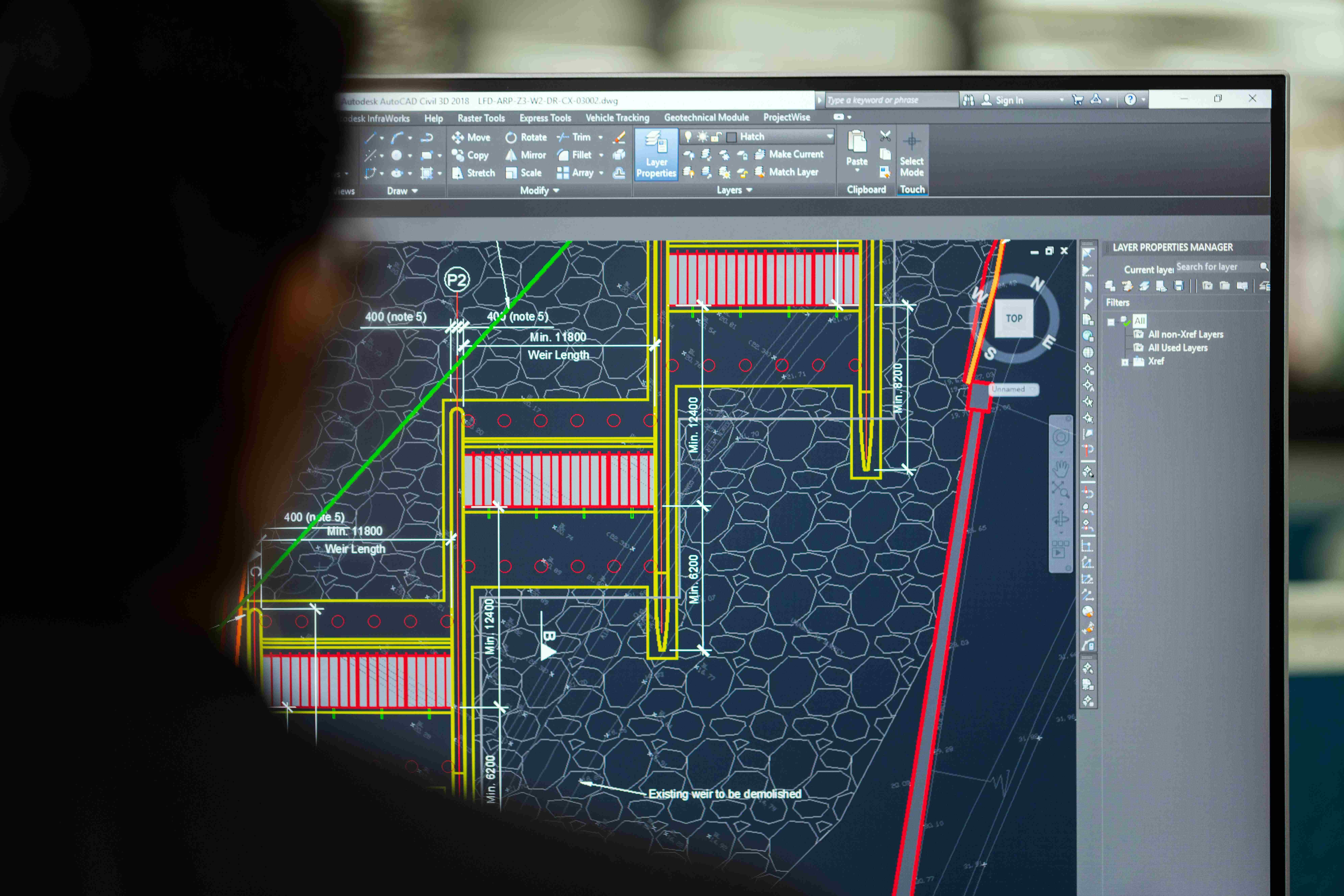Software Development Lifecycle’s Impact on Talent Identification
12 Feb, 20259 minutesIn the software industry, leadership selection is closely tied to the Software Development L...

In the software industry, leadership selection is closely tied to the Software Development Lifecycle (SDLC). As SDLC models evolve, so do the skills required to drive software development forward.
Our guide dives into the SDLC, breaking down each stage and model to reveal the specific roles and expertise essential for success at every step. Whether you’re refining a team or building one from scratch, discover what it takes to lead in an industry shaped by innovation and precision.
What is the Software Development Lifecycle?
The Software Development Lifecycle (SDLC) is a structured framework that software developers will refer to to guide them when designing and maintaining software. It provides measures to ensure its quality, efficiency and maintainability.
How Many Stages Exist in the Software Development Lifecycle?
There isn’t an exact order of stages, and names may vary between Software Development Lifecycle models. However, seven core stages generally make up the software development lifecycle:
Planning and Analysis: This stage defines the project's purpose, identifies the target audience, and assesses feasibility and financial constraints.
Define Requirements: Discuss the product’s goals and establish the required features and components.
Design: A detailed blueprint of the software architecture is created. User interfaces and security measures are built.
Coding: Code is written, and features based on the requirements and design are implemented.
Testing: Various types of testing are conducted, including unit, integration, and system testing. Any issues are rectified.
Deployment: Software is deployed to the production environment, necessary configurations are set up, and necessary configurations are made available to end-users.
Maintenance: Performance is monitored, and any issues encountered are remedied. Updates and features are incorporated where applicable.
What are the Main Software Development Lifecycle Models?
As mentioned, there are numerous lifecycle models - or methodologies - that software developers might rely upon when creating software products.
What is Waterfall Methodology?
Introduced by Dr. Winston W. Royce in 1970, the Waterfall model is a linear, sequential approach to project management and software development. It follows a structured process whereby each phase must be completed before proceeding to the next.
Stages of Waterfall Methodology
Typically, the Waterfall model consists of the following phases:
- Requirements: This phase involves collating and documenting all potential requirements and deadlines for the project. The requirements are analysed and logged into a functional specification document.
- Analysis: The system's specifications are analysed for product models and business logic. Financial and technical feasibility is also scrutinised.
- Design: To outline technical design requirements such as programming languages, hardware and architecture, a design specification document is created.
- Implementation: The source code is developed using design specifications. Smaller components or units might be coded before they’re integrated into a complete system.
- Testing: Several tests are carried out to ensure the quality of the product. It also serves as an opportunity to correct any problems.
- Operation and Deployment: The product is deployed to a live environment and is available to end-users.
- Maintenance: Developers must be diligent in supporting the product. This will include fixing bugs and providing new features and patches.
Agile Methodology Phases
The Agile model was born in response to the perceived limitations of the Waterfall methodology. Its approach is iterative and incremental and focuses on flexibility and collaboration. This process follows these key phases:
- Initiation: The project goals are outlined, stakeholders are highlighted, and a cross-functional team is formed.
- Iteration Planning: A subset of backlog items to focus on during each sprint are selected, and the time and resources needed for the features are established.
- Development: In this phase, the software begins to be built. Daily stand-ups commence to discuss progress, and code is continuously integrated.
- Testing: Throughout the development process, many tests gauge the software’s efficacy.
- Review: The product and its features are shared with the stakeholders for feedback, and retrospectives identify any improvements.
- Release: Conclusive quality assurance checks are completed, and the software is deployed to the production environment.
- Maintenance: System performances are regulated to ensure optimisation, and enhancements are incorporated where applicable.
Spiral Methodology
Developed by Barry Boehm in the 1980s, the Spiral Model is a risk-driven process that fuses iterative and incremental development. The key characteristics of this model include:
- Iterative Approach: This model has multiple spirals, each representing a different stage in the development process.
- Risk Management: Aims to identify and remedy risks as soon as possible.
- Flexibility: Can adapt to changing requirements and enables regular refinements.
There are four main phases:
Planning: The project’s objectives are defined, and the requirements are gathered.
Risk Analysis: Possible risks are detected and are mitigated or resolved.
Engineering: Development commences, and software testing does, as well.
Evaluation: The findings are assessed, and planning for the next iteration starts.
Skills Required for Software Development Lifecycle Jobs
Each phase of the SDLC stages represents a need for specific roles and a unique set of skills. The addition of variants of SDLC models has meant changes in how software companies secure key talent. For example, the planning of the Software Development Lifecycle requires the following positions:
Planning Phase of Software Development Lifecycle
Software Development Project Manager
Software development project managers must have a blend of industry-specific knowledge, leadership qualities, and project management experience. Their technical skills must encompass the following:
- An in-depth understanding of the software development methodologies referenced within our guide.
- Proficient in several programming languages like HTML, CSS, JavaScript, and Python.
- Must be adept in project management software such as Jira and Microsoft Project.
Project management also entails core competencies such as project planning, risk assessment, and budgeting. To supplement these, a range of leadership skills, like communication abilities and stakeholder management, are needed.
Business Analyst
Business analysts’ skills are invaluable throughout the Software Development Lifecycle as they facilitate engagement - and progress - between stakeholders, development teams and end users. Therefore, communication skills are a crucial component of this role because:
- Understand stakeholders’ needs and requirements.
- Translating business needs into a technical format for software developers.
- Presenting findings to an array of audiences.
- Dispute resolution between stakeholders where necessary.
Expert analytical skills are paramount as business analysts will be expected to collate and analyse vast amounts of complex data and transform it into actionable insights.
Defining Phase of the Software Development Lifecycle
Product Owner
During this phase, a product owner must ensure that the software product satisfies the target audience's needs. Strong business acumen is essential as product owners must demonstrate:
- Market Knowledge: Must have a deep understanding of the needs and pain points of the target market.
- Business Objectives: Ensure that business strategies align with the software product development.
In addition to understanding the market, a product owner’s knowledge of the product must be unquestionable. They will be able to clearly define the product’s aims, prioritise features based on consumer demands, and build a roadmap that outlines product evolution.

Design Phase of the Software Development Lifecycle
UI/UX Designers
The functionality of software products is pivotal, but it is equally important to ensure that applications are engaging and interactive for users. UI/UX designers need to have research and planning skills for several reasons:
- Understand user demographics, behaviours, needs and pain points.
- Develop user personas and customer journeys.
- Carrying out competitor analysis and applying SWOT analysis.
After research has been conducted, UI/UX designers must display design skills such as:
- Information architecture and wireframing.
- UI design that includes colour palettes, typography, layout and iconography.
- Utilising tools like Figma, Sketch, Adobe XD and Framer to prototype.
Further technical skills will be required. For example, a base knowledge of HTML and CSS is key, and as applications will be operational across many devices, an understanding of responsive design systems is, too.
Development Phase of the Software Development Lifecycle
This stage commences the coding and building of the software. This involves a combined effort from backend developers, frontend developers, and full-stack developers.
Backend Developers
For the design phase, backend developers must have knowledge of system architecture, which enables them to design scalable and efficient backend systems. They must also be able to design RESTful APIs for communication between the front and backend.
Backend developers will need to have a mastery of a range of concepts and respective tools:
- Programming Languages: Familiarity in Python, Java, PHP, Ruby and C#.
- Web Frameworks: Confidently use Django, Spring, Laravel and Ruby on Rails.
- Database Management: Utilise SQL for relational databases and NoSQL for non-relational databases.
- Version Control: Knowledge of Git for code management.
Frontend Developers
Frontend developers focus on the interactive elements of software product development. They must be proficient in programming languages like HTML, CSS, and JavaScript and knowledgeable about frontend frameworks such as React, Angular, and Vue.js.
Testing Phase of the Software Development Lifecycle
Quality Assurance Engineers
QA engineers are vital in ensuring customer satisfaction. They have multiple responsibilities and skills to do this. They must understand code and be able to write test scripts - knowledge of Java, Python, JavaScript, and C++ is necessary.
Test automation is another element of this role, and dexterity in the relevant tools and frameworks is pivotal:
- Selenium
- Cucumber
- Appium
Testing skills are the fabric of this role. QA engineers must be able to develop and implement test strategies that cover all elements of software product development. As well as this, skills in the following areas of testing are necessary:
- Manual Testing: Expertise in various manual testing techniques, including functional, regression and exploratory testing.
- Performance Testing: Knowledge of performance testing methods to better understand software under different loads.
- Security Testing: Understanding security testing principles is key to detecting possible software flaws.
Deployment Phase of the Software Development Lifecycle
DevOps Engineer
Similarly to the previously mentioned roles, DevOps engineers must be able to use scripting and programming languages and version control systems. Infrastructure as Code (IaC) is an important element of this position, and DevOps engineers are required to utilise the following tools:
- Terraform
- Ansible
- Puppet
- Chef
Continuous Integration/Continuous Deployment (CI/CD) tools such as Jenkins, GitLab CI, CircleCI and Travis CI will be frequently relied upon. Additionally, DevOps engineers must be skilled in containerisation and container orchestration tools like Docker and Kubernetes, as they’re routinely used in tandem. Experience with cloud platforms such as Amazon Web Services, Microsoft Azure and Google Cloud Platform is required.
Maintenance Phase of the Software Development Lifecycle
Support Engineers
Once a software product is in a live environment and available to end users, support engineers must have several skills to ensure its efficacy and customer satisfaction. They will have technical skills that include:
- Troubleshooting and Debugging: Support engineers should be able to quickly and efficiently identify and rectify problems. This consists of analysing error logs and implementing fixes in the form of patches.
- Programming and Coding: They must be able to understand and modify code so that issues can be addressed.
- Database Administration: Many software problems are data-related. Therefore, skills in database management and SQL are key.
- Operating Systems: Understanding systems, networks, and server environments is key for infrastructure-related fixes.
Final Say: SDLC's Impact on Strategic Talent Acquisition
The Software Development Lifecycle is a dependable framework for those software development careers. It consists of several stages, all requiring specific roles and skills. Over time, SDLC models have formed, and more might continue to develop, meaning numerous software development jobs have been generated.
Given the various responsibilities needed for SDLC stages, software companies struggle to meet the demand for experienced and skilled professionals. Finding the right fit can take time and resources. However, strategic headhunting can ease the burden on organisations to fill these software development jobs.
Executive Alignment for Software Development Jobs
We combine a startup's flexibility with a large group's financial backing to elevate businesses of all sizes. We can create effective partnerships between clients and candidates to achieve sustainable success by utilising industry expertise and a comprehensive network.
Want to learn more? Contact us today.



